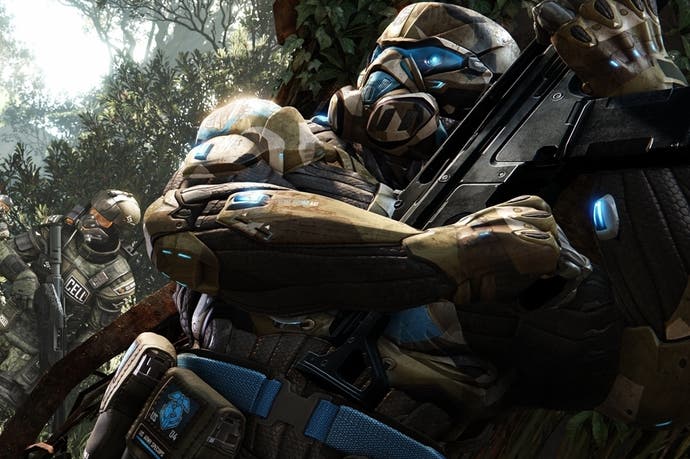Demo showdown: Crysis 3 multiplayer beta
Maximum game?
Crysis 2 was a controversial release; Crytek's renowned 'maximum game' ethos was put on hold in favour of targeting multiple platforms, much to the annoyance of the PC hardcore. It took the release of a DirectX 11 patch and a high-res art upgrade to placate the fans, but the results were more than worth it - it's still one of our 'go to' games for sheer visual spectacle. This time around, we suspect there'll be no such complaints. The focus on extreme visual quality is back in Crysis 3, with the development team building this sequel around high-end graphics cards in order to deliver a visual masterpiece worthy of the next generation of gaming hardware.
The single-player component of Crysis 3 will almost certainly push the graphical envelope further than its online counterpart, but regardless, the recently released multiplayer beta allows us to get some idea of how CryEngine 3 has evolved over the last couple of years, plus we get an early preview of Xbox 360 and PlayStation 3 image quality and performance. Are the 'vintage' consoles up to the task of running a Crysis game that is even more visually demanding than the last?
From the off, it's clear that much has changed in Crysis 3 in terms of the environments and how they are integrated with gameplay. The dilapidated, man-made cityscapes of New York are now combined with sprawling organic locations situated in various bio domes. Two distinct locations are available in the beta: a museum stage set in a large and murky swamp and an old abandoned airport, slowly deteriorating and overgrown with foliage. Here, Crytek manages to infuse elements from the first and second games in the series into its latest work.
There are also two very different game modes on offer, complementing the change in scenery: Crash Site focuses on direct team assaults to capture dropped alien pods, while Hunter offers up more stealth and strategy as one set of players become cloaked nano-suit assassins taking down military personnel using high-powered bows.
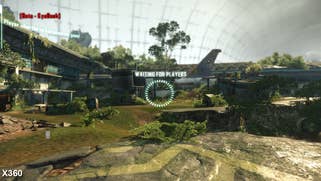
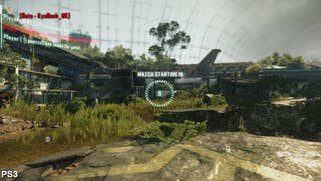
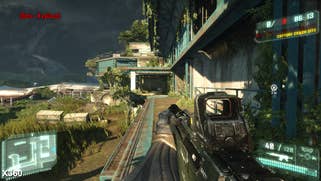


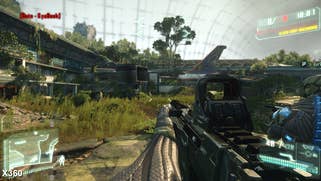







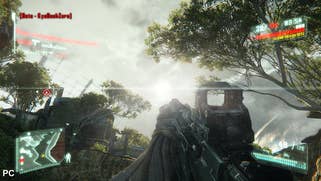



Both of the maps chosen for the beta feature environments that deliver a good sense of scale absent from some of the multiplayer locations in the last game, even if the player is limited in how far they can travel due to invisible bounding areas situated around the maps. On the PC, these areas are wonderfully realised with superb lighting (including Crytek's single bounce global illumination implementation), highly detailed texture work and modelling, along with plenty of lush foliage which all helps to the create the distinct feel of a man-made landscape being reclaimed by nature - here we find the 'maximum game' ethos is clearly in effect. A range of anti-aliasing modes also keep things looking smooth enough without necessarily incurring a large performance hit; we used SMAA (Updated: sub-pixel morphological anti-aliasing), but FXAA and traditional MSAA are also available.
Compared to the stock release of Crysis 2, it's clear that there have been no compromises where this sequel is concerned, to the point where even running in low settings on PC yields a vastly superior visual experience to either console. The downside is that you'll need a dual GPU set-up to max out the game using the 'very high' preset while running at steadily playable frame-rates (though Nvidia's upcoming single GPU Titan hardware might have something to say about that). Our Radeon 7870 test rig managed between 20-50FPS when running the game on its highest setting in 720p, although dialling back a few settings to medium or low, along with tweaking other options - such as motion blur - allowed for a ballpark 1080p60 without feeling short-changed on the quality of the visual experience.
As you may expect, there are some significant downgrades in the console versions of Crysis 3 as Crytek attempts to transplant the ambitious visuals to significantly less powerful hardware. Foliage is considerably pared back, the geometry complexity of the environments is reduced, and lower quality artwork is employed throughout the two maps available in the beta. The end result is that the world rendered on the consoles doesn't appear quite as organic and alive as it does on the PC, although the general atmosphere is retained.
"Crysis 3 looks sensational, but can current-gen consoles handle the increased visual complexity with a smooth frame-rate?"
The main point of difference between the console versions revolves around streaming and rendering resolution. In terms of the former, the PS3 has an obvious advantage (particularly at the beginning of each round and after respawns) in terms of more quickly streaming artwork, though during gameplay the two are more evenly matched. For its part, the 360 features improved texture filtering and slightly longer draw distances in general - particularly where shadow rendering is concerned.
Resolution remains identical to that of Crysis 2 (1152x720 on 360 and 1024x720 on the PS3) but the use of the firm's 'post AA' has been jettisoned in favour of what we believe to be shader model anti-aliasing (SMAA) which uses a different kind of temporal filter that features less double image 'ghosting' artifacts on fast-moving scenes and objects. Some texture blurring is apparent on both consoles, as are shimmering jaggies on more finely detailed parts of the environment, but the 360 game regularly comes across as the sharper of the two.
Crytek appears to be carrying out a fine balancing act in bringing the more ambitious environments to console hardware while still retaining a decent level of performance. That said, the inclusion of large locations fleshed out with more natural, organic detail does have some noticeable repercussions. The mostly solid 30FPS update found in Crysis 2's multiplayer modes is compromised by frequent drops in frame-rate, particularly during hectic scenes involving lots of players and transparent alpha effects.
"The evidence suggests that like Crysis 2 before it, individual engine settings have been tuned to better suit the respective capabilities of each current-gen console."
Perhaps in order to combat this, object blur is dropped on console Crysis 3 (in multiplayer at least) with just a camera-based effect remaining, resulting in more noticeable judder. However, even the camera effect appears to be used sparingly: post-processing only seems to be employed on faraway detail, while it is not in effect at all on anything in the foreground - spinning around while stationary demonstrates this quite clearly.
Thankfully, the overall downgrade in fluidity here is less severe than the sub-20FPS drops during Crysis 2's campaign mode, although the dips in performance can be a little off-putting. Frame-rates are generally lower during matches situated on the museum stage, where the inclusion of water effects, environment reflections and foliage cause more of a performance hit. This is a much more significant issue on the PS3 in both maps, where the level of fluidity tends to drop even lower when the engine is heavily stressed. Both versions have their own performance issues, although we see the 360 gaining a small advantage with slightly higher frame-rates on average overall.
Factoring in the more varied environments and diverse gameplay modes, the Crysis 3 multiplayer beta represents a tangible improvement over its predecessor on all platforms, even if some of the graphical upgrades do appear to trade fluidity in favour of spectacle. From a gameplay perspective at least, the reduced smoothness is a concern, especially in a multiplayer scenario where controller response is so crucial. Of course, the real test comes with the single-player campaign where we fully expect a genuine showcase for the capabilities of CryEngine 3. We're fascinated to see how the game plays out on current-gen consoles, but it's the PC version that intrigues us the most, serving as Crytek's shop window for what its engine is capable of on the mainstream gaming hardware of tomorrow...
